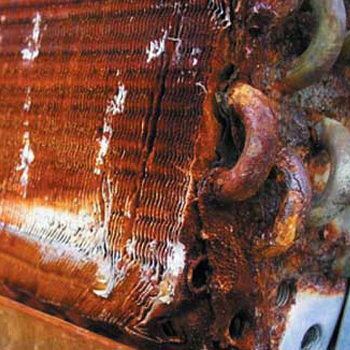Copper Coils Rusting
People in the cities, towns and hamlets are facing the tantrums of copper coil rusting.The result from ineffective copper coils will result into paying high electric bills and low cooling efficiency of the air conditioners.
Copper is a slow and continuous process and it will degrade and lower the efficiency of an air conditioner. In general, the condensing coils are cleaned twice in a year, but this cleaning decreases the shelf life of fins and ultimately there is a need for a replacement. The condensing unit is composed of Copper, Steel and Aluminum. The salt air acts as an Electrolyte. Therefore the Electrolysis (Galvanic Corrosion) starts the destruction to your air conditioning system when it is turned on.
Types of Coil Rusting
- Pitting.
- Formicary.
These two corrosive processes may begin to take place within a one- to four-year period. The knack to differentiate pitting from formicary corrosion will help in detecting and eliminating the cause.
Pitting Corrosion
Pitting corrosion is caused due to chlorides or fluorides, and more precisely it occurs due to the negatively
charged chloride/fluoride ions, which have been transferred to the surface of metal by the condensate. Pitting is visible to the naked eye as it appears on the exterior of the copper tube.
Principal Sources of Chlorides/Fluorides
Chlorides Occurrence: Snow-melting crystals, toilet bowl/tile cleaners, dishwasher detergents, fabric softeners, vinyl fabrics, carpeting, paint strippers, etc. Fluoride Occurrence: Municipal water treatment plants
Formicary Corrosion
Formicary corrosion occurs due to organic acids like acetic acid and formic acid. This type of corrosion is not visible to the naked eyes, as it occurs on the sub-surface linkage of microscopic corroded tunnels inside the tubing wall, and closely resembles the ant nest-type structures.
Principal Sources of Acetic Acid/Formic Acid
Acetic Acid Occurrence: Adhesives, paneling, particle board, silicone caulking, cleaning solvents, vinegar, foam insulation and several other products prevalent in the home or commercial/industrial workplace. Formic Acid Occurrence:Cosmetics, disinfectants, tobacco and wood smoke, latex paints, plywood





